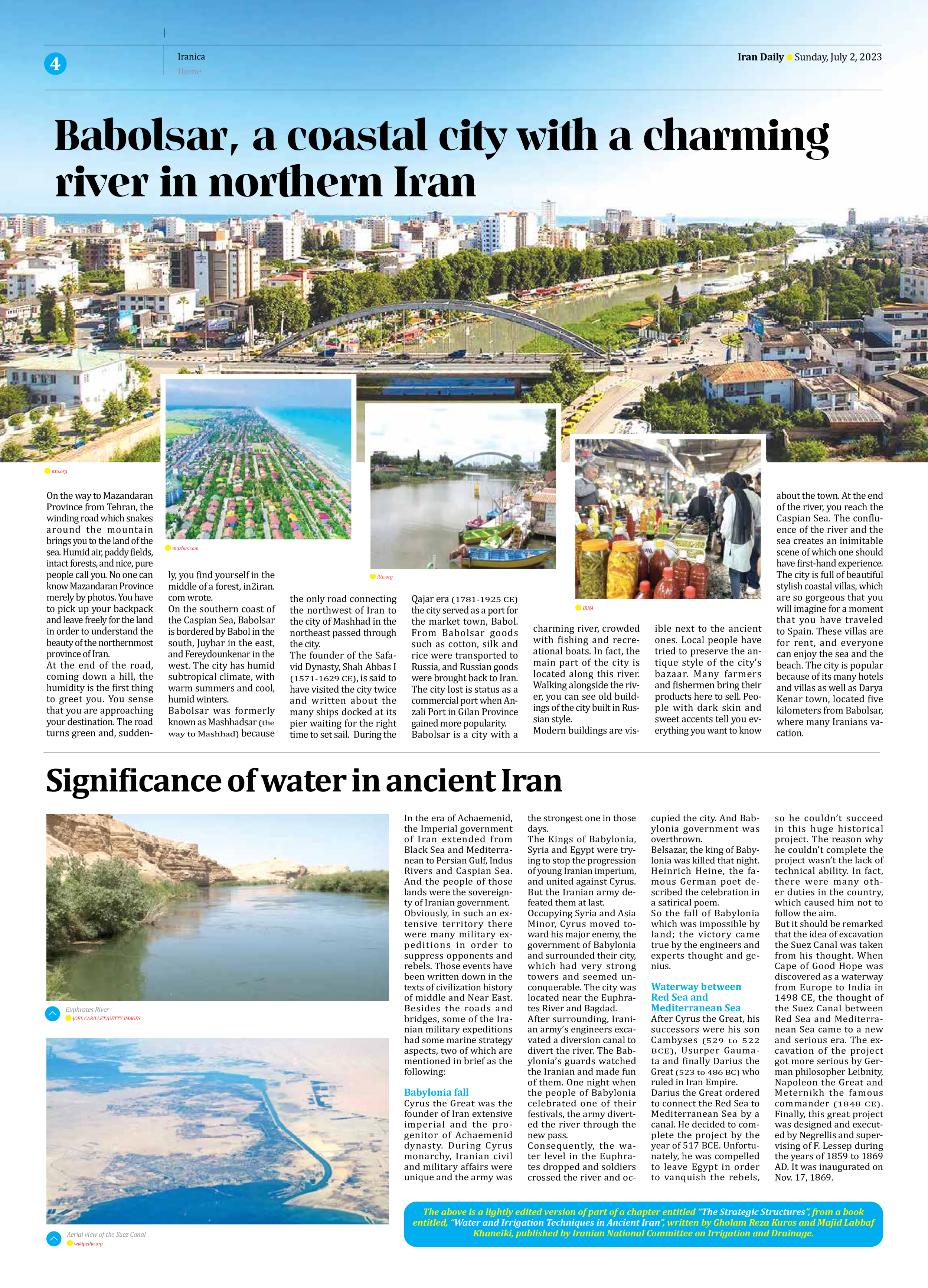
Significance of water in ancient Iran
In the era of Achaemenid, the Imperial government of Iran extended from Black Sea and Mediterranean to Persian Gulf, Indus Rivers and Caspian Sea. And the people of those lands were the sovereignty of Iranian government.
Obviously, in such an extensive territory there were many military expeditions in order to suppress opponents and rebels. Those events have been written down in the texts of civilization history of middle and Near East. Besides the roads and bridges, some of the Iranian military expeditions had some marine strategy aspects, two of which are mentioned in brief as the following:
Babylonia fall
Cyrus the Great was the founder of Iran extensive imperial and the progenitor of Achaemenid dynasty. During Cyrus monarchy, Iranian civil and military affairs were unique and the army was the strongest one in those days.
The Kings of Babylonia, Syria and Egypt were trying to stop the progression of young Iranian imperium, and united against Cyrus. But the Iranian army defeated them at last.
Occupying Syria and Asia Minor, Cyrus moved toward his major enemy, the government of Babylonia and surrounded their city, which had very strong towers and seemed unconquerable. The city was located near the Euphrates River and Bagdad.
After surrounding, Iranian army’s engineers excavated a diversion canal to divert the river. The Babylonia’s guards watched the Iranian and made fun of them. One night when the people of Babylonia celebrated one of their festivals, the army diverted the river through the new pass.
Consequently, the water level in the Euphrates dropped and soldiers crossed the river and occupied the city. And Babylonia government was overthrown.
Belsazar, the king of Babylonia was killed that night.
Heinrich Heine, the famous German poet described the celebration in a satirical poem.
So the fall of Babylonia which was impossible by land; the victory came true by the engineers and experts thought and genius.
Waterway between Red Sea and Mediterranean Sea
After Cyrus the Great, his successors were his son Cambyses (529 to 522 BCE), Usurper Gaumata and finally Darius the Great (523 to 486 BC) who ruled in Iran Empire.
Darius the Great ordered to connect the Red Sea to Mediterranean Sea by a canal. He decided to complete the project by the year of 517 BCE. Unfortunately, he was compelled to leave Egypt in order to vanquish the rebels, so he couldn’t succeed in this huge historical project. The reason why he couldn’t complete the project wasn’t the lack of technical ability. In fact, there were many other duties in the country, which caused him not to follow the aim.
But it should be remarked that the idea of excavation the Suez Canal was taken from his thought. When Cape of Good Hope was discovered as a waterway from Europe to India in 1498 CE, the thought of the Suez Canal between Red Sea and Mediterranean Sea came to a new and serious era. The excavation of the project got more serious by German philosopher Leibnity, Napoleon the Great and Meternikh the famous commander (1848 CE). Finally, this great project was designed and executed by Negrellis and supervising of F. Lessep during the years of 1859 to 1869 AD. It was inaugurated on Nov. 17, 1869.
The above is a lightly edited version of part of a chapter entitled “The Strategic Structures”, from a book entitled, “Water and Irrigation Techniques in Ancient Iran”, written by Gholam Reza Kuros and Majid Labbaf Khaneiki, published by Iranian National Committee on Irrigation and Drainage.







